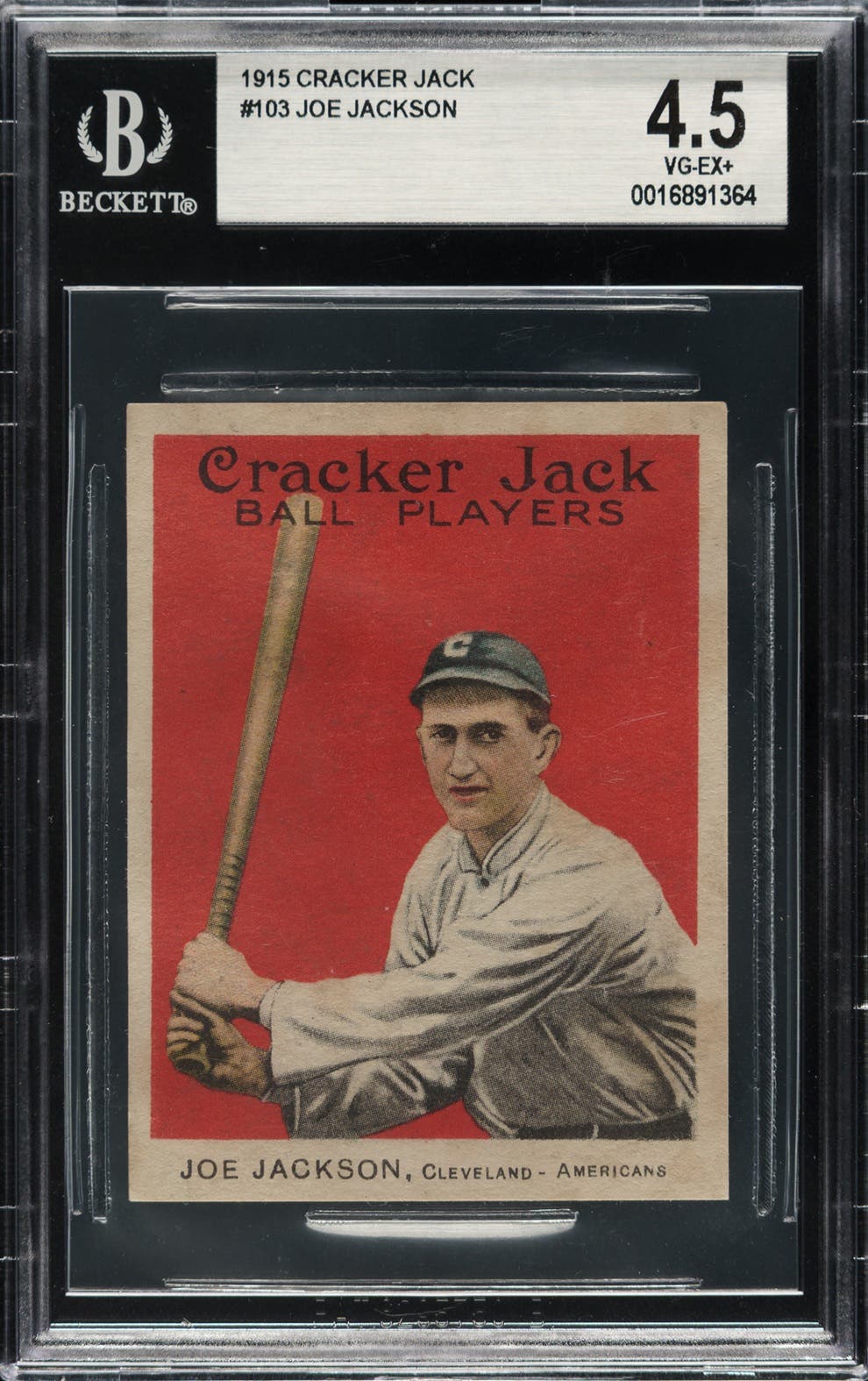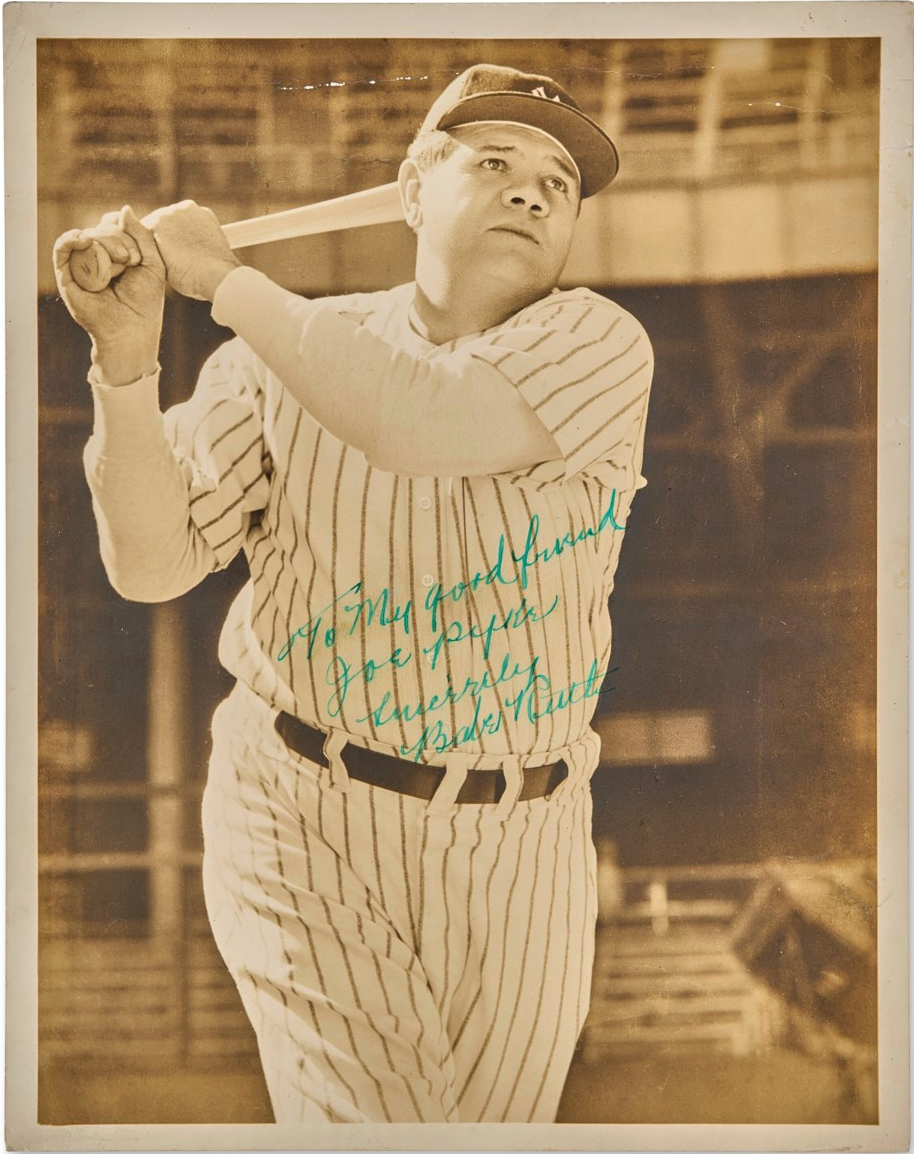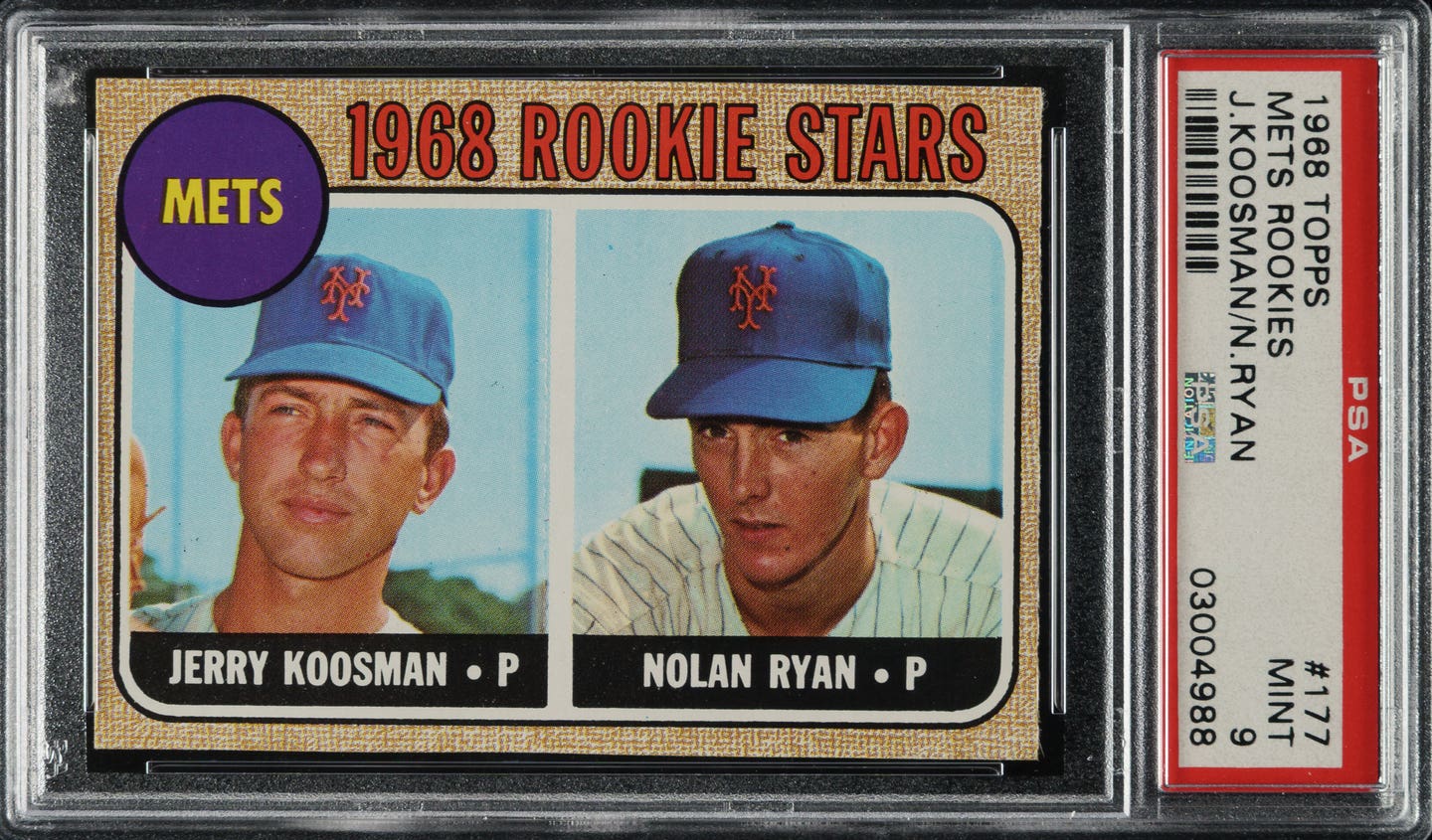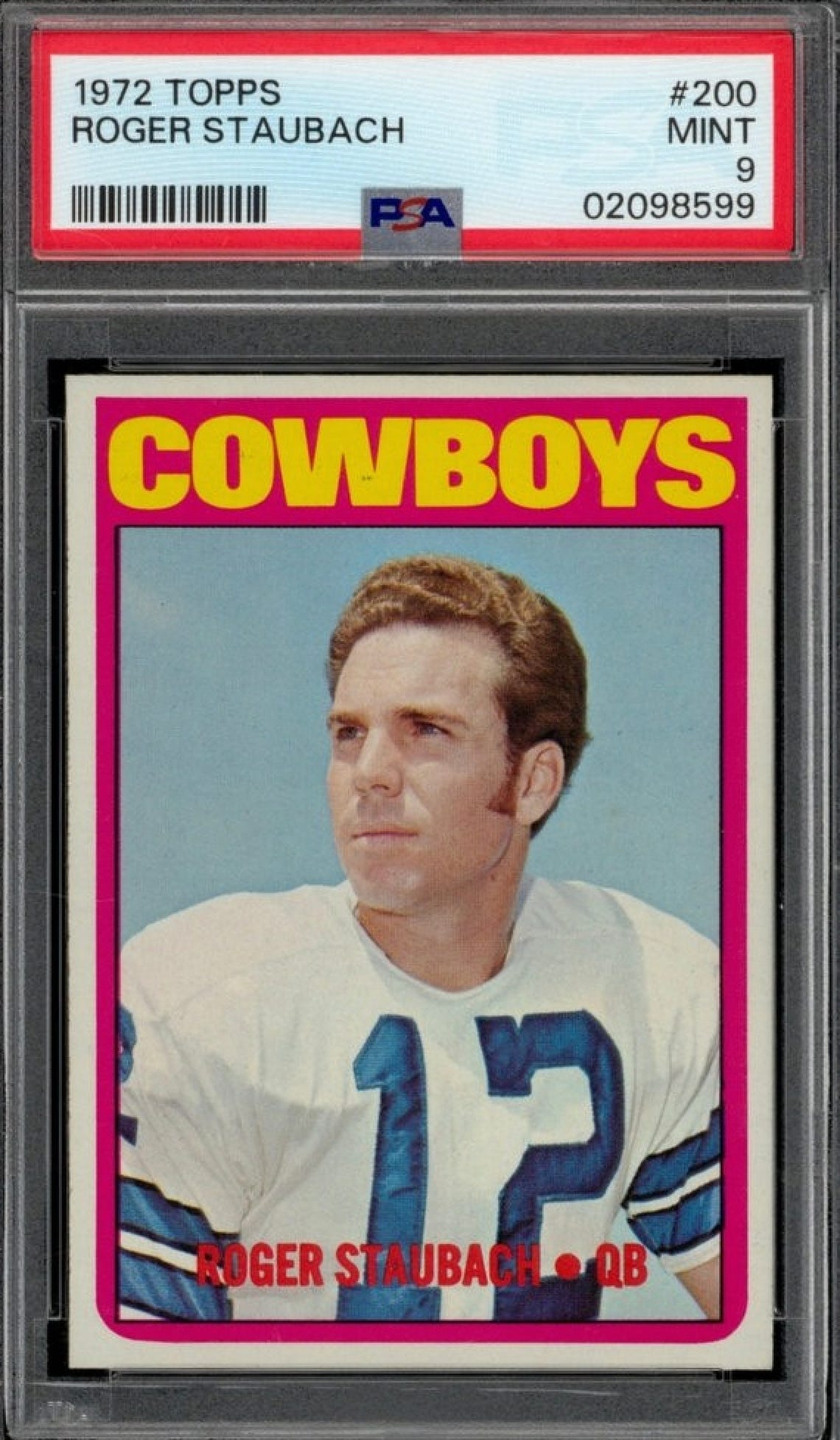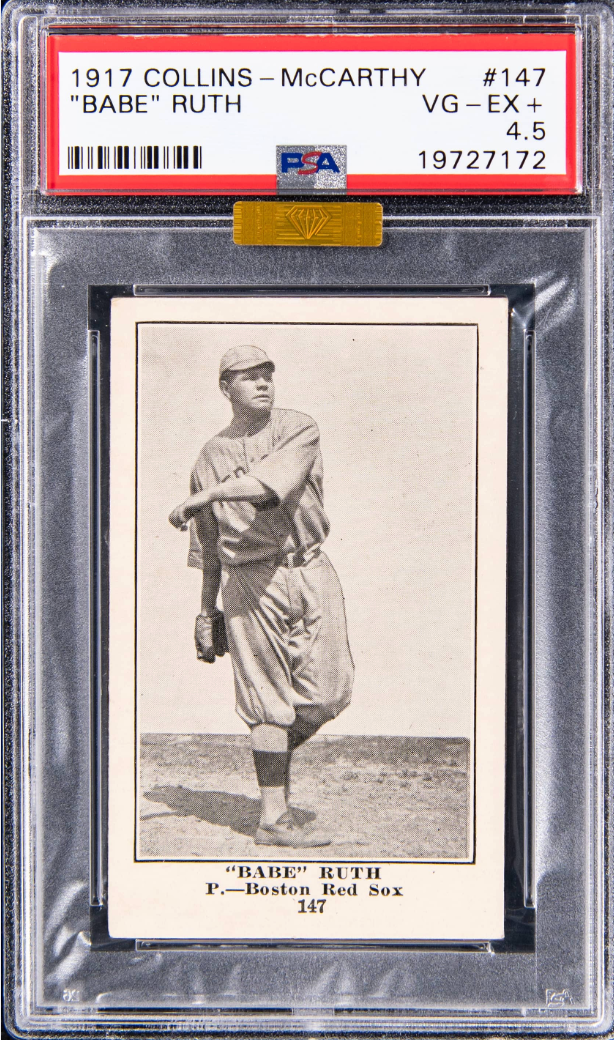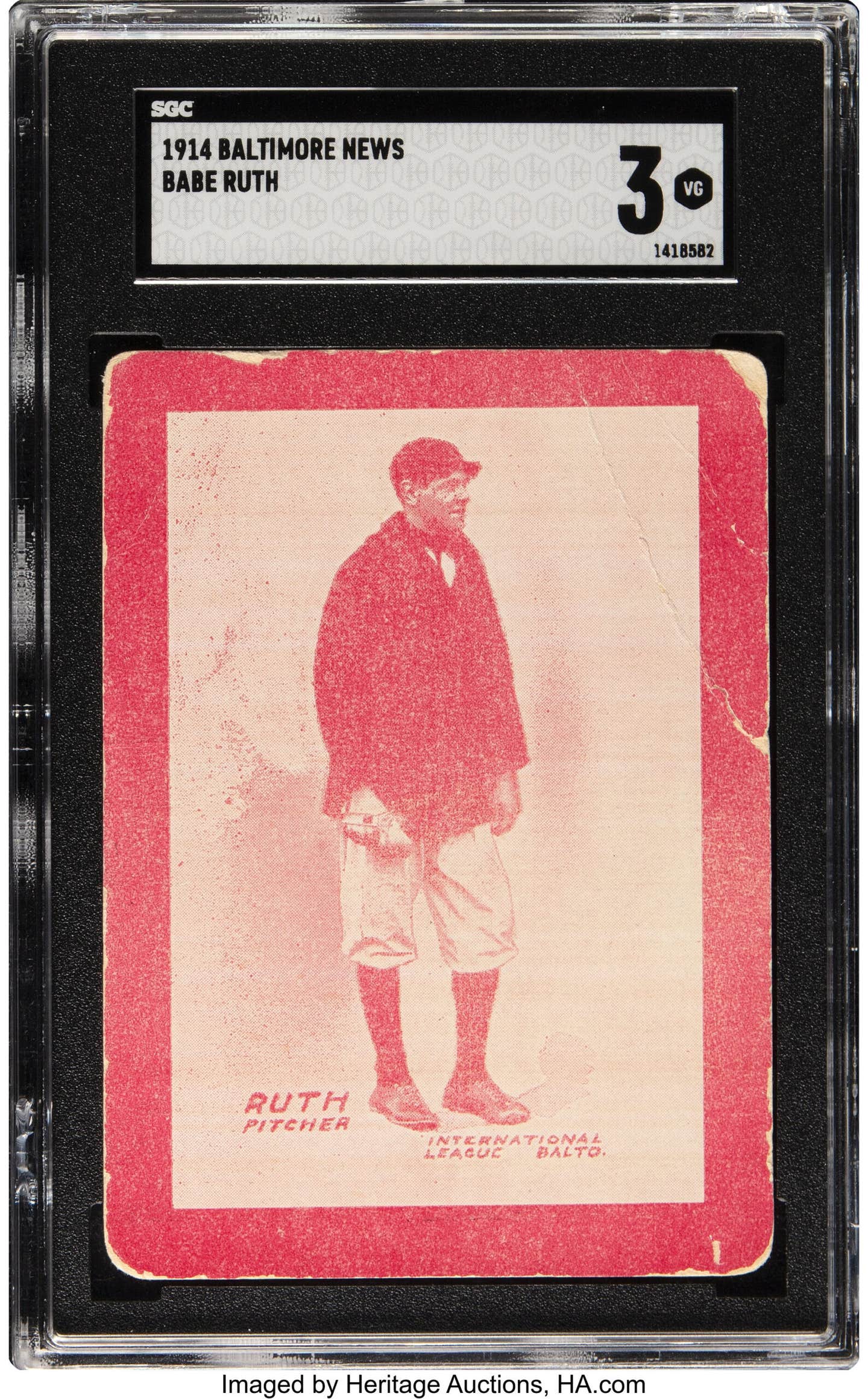Auctions
Mastro snags Lionel Carter Collection for auction
When you see photographs of Lionel Carter looking at his amazing collection of tobacco or gum cards or his virtually pristine run of mainstream sets from the mid-1930s to the 1970s, it's hard not to panic and think, "Oh, my God, he's pasted those gorgeous cards onto album pages!" Just the fact that I permitted myself to use an exclamation point says it all. I am quite niggardly in allowing such usage on these pages.
As you can see from the images on the adjacent page, that's what it looks like, but mercifully, the cards are safe and unblemished. Of course, serious hobbyists, including Doug Allen of Mastro Auctions, have known all along that the pioneering Carter had devised a museum-worthy archiving system that safely tucked the cards in place and, remarkably, didn't leave any telltale indications on the corners or anywhere else.
Those are important considerations, since the 88-year-old Carter has decided to sell what is arguably one of the last great collections tracing its roots to the earliest days of the hobby. If the decision to sell is traditionally an agonizing moment, what must it be for somebody who remembers opening packs of 1933 Goudeys ... in 1933?
The decision also comes on the heels of a home burglary at Carter's house in Evanston, Ill., in November (see adjacent story) that was startling in its brazeness but ultimately ended well when most of the stolen cards were returned. Still, that kind of event would haunt anybody, certainly moreso for an elderly couple now grappling with the question of what to do with the cards now.
"Lionel didn't necessarily want to sell it right now, but I do think that he is excited about the process," said Allen in an interview following the announcement that Carter had consigned his entire collection to Mastro Auctions. "When I talk to him about it, and the idea of his material being in the catalog, and the cards having provenance that says 'The Lionel Carter Collection,' he likes the process, but if he had his wish he would have simply have said, 'I am not going to sell my collection now.' It's not like he pages through the collection every day, but he does like having it."
Not surprisingly, the burglary at his Evanston, Ill., helped bring about the decision to sell. "It just got to the point where it became this thing that was hanging over his head, especially after the break-in and having the authorities and people who work with the police telling him that, 'Hey, it's probably not a good thing to keep this in your house.' "
And they asked him if he wanted to move it to a safety deposit box or something like that. "I think it just got cumbersome for him," said Allen, who by then had built up a personal relationship with Carter and his wife, Irma. Allen was visiting Carter after the burglary, helping out in any way that he could in the interval between the burglary and the eventual return of the cards.
"And it was almost comical," Allen said, recalling that trip on Feb. 7. "Irma said he was downstairs, and I went down there and he had a bunch of the cards out, and I told him he shouldn't have them out and that I would help him put them away.
"And Lionel said, 'I thought you would want them,' and I kinda looked over at Irma, and she just sort of nodded with a grin on her face. And I told him, 'Of course, I want them, I'm an auctioneer, but I've never asked you to sell your collection.'
"And he said, 'Yeah, but you know what? It's time. We're ready to do it.' And I asked him if he meant everything. 'Yeah, everything,' he said. And that's how the whole thing started."
And Allen and CEO and founder Bill Mastro returned to Carter's house the next day and spent the whole day going through each set with him and making sure that they had an understanding of everything that was there, and in the process getting some of the stories that go with the cards.
"He has this article from 1956 where it made a big deal about his collection. He was with John Sullivan, and in this 1956 article in The Sport Fan out of St. Paul, Minn., where it says, 'Chicago bank officer amasses thousand-dollar sports card collection.'
"And he was the first one to assemble a complete Delong set, and in the picture he was showing it to Sullivan. And Carter just had some great stories. This is a guy who literally, from the late 1930s to when he finally tailed off in the 1980s, put everything together from packs. He even opened Goudey packs.
Burdick had eight or 10 Lajoies
"I was going through his 1933 Goudey set and I was getting ready to turn the page, and before I turned it I said to him, "OK, do you have one.' And he said, 'Yeah, I've got one.' And I asked him to tell me the story before I turned the page."
" (Jefferson) Burdick was a better letter writer than me," Carter told him in reply to the question about the 1933 Goudey Nap Lajoie card, a pasteboard so famous and coveted that Allen didn't even have to specify which card he was talking about. "Burdick had written a letter to Goudey all concerned because this card didn't exist. And Goudey sent him eight or 10 of them, and he sent me one," Carter said.
"So his 1933 Goudey Lajoie, which is in incredible condition, also came directly from Burdick," Allen continued. "And it's neat to have that kind of story behind it."
For Allen, a serious and enthusiastic collector himself, handling the vast collection has been a special treat. "When we went through his material, to give you an idea of the depth and breadth of his collection, he didn't collect anything 19th century," Allen explained. Carter's collection begins in the early 1900s with the typical tobacco and candy card issues. "Though he had some Wilson Franks and he would have some of the rarer things, like E92 Nadjas, for the most part he was a mainstream collector, with the primary issues.
"He might have a stack T204s, but that's a little out of the ordinary, so instead he had his T205s, T206s and Double Folds and Triple Folds and his E cards.
"What really marks this collection is condition. He was a guy who really cared about condition, even before anybody else did," Allen continued. "We handled the Egan and Nagy collections, and they were phenomenal, but they weren't phenomenal because of condition, it was because they did go back to the 19th century, or they did collect more-obscure things.
"Carter's cards, going from one set to another, it was clear he cared about the corners, he cared about centering. He put them away in such a way that they never saw the light of day. We opened his Diamond Stars and the colors just jumped out at you."
And of course all these cards have never been in the hobby. "What's interesting is that, for example, the 1933 Goudeys, they don't necessarily look like every one was pulled out of a pack - and Lionel doesn't necessarily remember - and they have a little bit of wear on the corners, so maybe he just handled them a little bit.
"Whereas the 1938 Goudeys do look like they just came out of a pack yesterday. The DiMaggio is just an absolute mint card, which you just don't see."
Allen said he saw an Internet posting the other day where the writer asked if anybody ever finds the 1935 Goudey 4-in-1s in near-mint to mint condition. "Well, you don't, but Carter's whole collection is like that. The whole collection of 1935 Goudeys is in just unbelievable condition."
Allen conceded there are anomalies, as of course there would be. There are in virtually everybody's collections, no matter how fastidious the collector might be. Like his Cracker Jack set. "I have no idea why he never went back and got one of those 1915 Cracker Jack sets from the mail-in offer," Allen said. "Maybe it's just because he pieced them together one at a time. He has the rarities, the Mathewson and the Frank Chance from the 1914 set - he has a master set from both years - yet the condition of those isn't that fantastic."
Allen figures that Carter just didn't want to spend any real money on it. "He looked for everything, and he would upgrade whenever he could, but I don't think he went out of his way."
Allen thinks that is why Carter never owned a Wagner card. "He told me that he had had one offered to him a couple of times, once for $150, but he didn't want to spend $150 on a baseball card."
Allen noted that in the remarkable albums that Carter created, he shows the American Card Catalog designation and the price, so in the case of his T206s it says "3 Cents" on the top, so that must have been what they were going for when the put the set together.
"He had all the Bowman issues; the Topps issues he had complete up to the mid-1970s," Allen continued. When Allen and Mastro were going through Carter's closet, they also found more pedestrian things like traded sets from the 1980s, which Allen figures Carter just picked up at various shows.
Allen said Carter still tinkered with the hobby up to the 1990s, but the focus was through the 1960s. And all the sets in the 1960s there are going to be centering issues or there may be a dinged corner here and there - either from sitting unceremoniously in a box or during the course of the burglary - but for the most part the cards are uncirculated.
"He said that he pulled many of them out of vending boxes years ago. By the late 1950s and early 1960s he was buying vending cases rather than packs, and he would go to shows and sell sets and just put a set aside for himself."
A lot of the material will be in the April auction, including Carter's T205 and T207 sets, M116, M101-4 and a number of E sets and partial sets, plus that spectacular 1933 Delong set, 1933, 1935 and 1936 Goudey, 1934-36 Diamond Stars, the 1938 Goudey Heads Up and 1941 Goudey, 1939 and 1941 Play Balls and the 1941 Double Play issue. There will also be a sampling of Carter's Bowman and Topps cards from the 1950s and 1960s.
That sounds like the Mastro folks have been busy since the deal was nailed down, but it still leaves Carter's T206s, Double Folds and Triple Folds, another pile of E card sets, his 1933-34 Goudeys, his 1934 Batter Ups and his 1940 Play Balls, to say nothing of all those pristine Topps and Bowman sets.
"The nice thing is that his is the kind of material that if we had the time we could have put it all in the same auction, because it covers so many different eras," Allen added.
Wrestling with those remarkable albums
"When we got it in the office a couple of weeks ago, we've been working around the clock to get stuff ready for April," he continued. "We didn't want to wait and not get anything in until our August auction, so we picked and chose carefully. We already had a great T206 set from another consigner in the April auction, so we held Carter's until later. And we kind of went through the process that way. We already had a nice Lajoie card in the sale, so we'll hold Carter's until this summer."
And Allen noted that as they went through everything figuring out the best way to segment and offer the cards and maximize the value for Carter, it was genuinely time consuming to take everything out of the albums.
"What he did, and it still amazes me that he didn't damage the cards, he had these little paper corners that held the cards. There was no glue. In 98 percent of the cards there were no problems, which was fantastic."
In the earlier issues he used those black corners that were commonly used in photographic albums; as the years went by he had clear corners. It still required a careful process by Mastro staffers to cut around the actual corner holders, rather than trying to pop the cards out.
"I was sitting there at the kitchen table for a week, meticulously taking each card out and top loading it,"
Allen laughed. "You can't send the cards out to the grading companies in the album pages; they'd kill you."
Allen's enthusiasm for the whole undertaking is so unabashedly genuine that you tend to forget about the business aspect of it all. "The pages and albums are one of the things that makes all this so special. I was joking with Lionel about how I am a big T206 collector and I would love to add his set to my collection," Allen laughed, recounting the age-old dilemma that shadows even the biggest of the roster of collectors, dealers and auctioneers.
"I sold mine years ago, and I told Carter I was having a hard time with his T206 set. 'What do you mean?" Carter asked. "I told him I just couldn't bring myself to take them out of the pages; I wanted it for my own collection."
"You rascal, you," said a delighted Carter.
And while economics dictate that the vast majority of the collection be third-party graded, there's still that purist collector in Allen who insists there's something extraordinary to be conveyed to bidders and hobbyists by showing the fashion in which these cards were so lovingly protected for a half-century or more.
"What I am thinking about is taking one of his sets, and the T206 set might be the one because it's in differing grades and it's a nice ex to ex-mt set, and maybe that's the one where we show it and offer in the original album that it was in," Allen said. And the hope would be that the winning bidder might still keep the set in that fashion, though the pressure to remove individual cards for entombing even at that point would be enormous.
Speaking of entombing, Dave Forman of SGC contacted Allen when he heard about the collection being consigned and he asked if Carter had any of the cards graded. When told he hadn't, Forman offered to grade a few just to show Carter what that looks like and give him some familiarity with the idea.
"When (Carter) looked at our catalog, he really didn't get the graded-card thing, because he asked about what kind of sleeves the cards were in. And so we took Lionel's M101-4 1916 Globe Clothing Stores Babe Ruth card and I sent it to Dave and when we got it back graded we showed it to Lionel. And he said, 'Wow, this is great.' And it said 'Lionel Carter Collection' and we told him we would get all the cards graded like that."
Allen said the lion's share of the cards would be graded by SGC, though there will be some exceptions where the cards will go to PSA in those instances where because of the population report they would need to be in PSA holders. The cards that will carry the "Lionel Carter Collection" provenance will be SGC graded.
That designation includes even the Cracker Jacks, which will be in this auction. Allen said they got every single card graded even though they were in mixed grades, because they wanted it to be part of the promotion.
Some will be offered as complete sets, some where the condition is so stunning, will necessitate that they be offered as singles. "I know the collectors who will be buying these cards, and I will tell them, 'Even though I know you want to upgrade a few cards, you are still going to want to buy the complete set because it's so cool,' " Allen continued.
For Allen, the whole process with the pioneering Carter has served as another of those reminders why working in your hobby - at whatever level - can be so special and so rewarding, speaking in a much broader vein than merely dollars and cents.
"Since I've taken over this company, it's always been kind of been where the Egans and the Nagys of the world gravitate to Bill, because he's the guy they know," Allen continued. "I've been building a lot of relationships with the old-timers, because I just love the hobby and I like hearing the stories and stuff, and this is the first one for me and it was really gratifying to be able to land a collection like this. And that was really cool for me.
"I even rubbed it in with Bill a little bit, because it's kind of a passing the torch."



